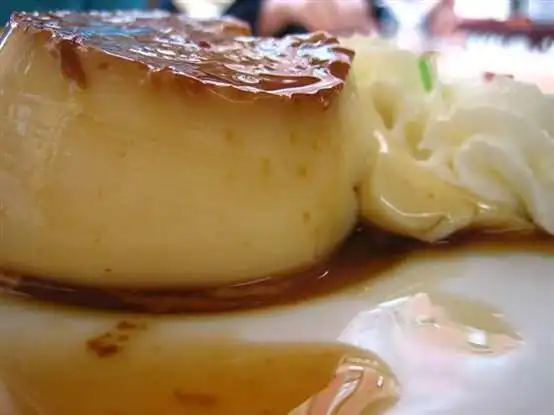Embark on a flavorful journey to the heart of Costa Rica with Patacones, a beloved dish that captures the essence of tropical indulgence. These crispy, golden plantain delights offer a delightful combination of textures and flavors, making them a popular snack or side dish in Costa Rican cuisine. Join us as we explore the recipe for Patacones, unraveling the essential ingredients, the meticulous preparation, and the cultural significance that make this dish a symbol of Costa Rican culinary creativity and delight.
Understanding Patacones: A Culinary Treasure:
Patacones, also known as Tostones in some Latin American countries, are a staple in Costa Rican cuisine. These twice-fried plantains showcase the versatility of this beloved tropical fruit and reflect the country’s rich agricultural heritage. Whether enjoyed as a crispy snack with a dipping sauce or served as a delightful side dish, Patacones are a testament to the creativity and love for bold flavors that define Costa Rican gastronomy.
Ingredients for Costa Rican Patacones:
Patacones are celebrated for their simplicity, yet the choice of ingredients is crucial to achieving the perfect balance of textures and flavors. Let’s explore the components that contribute to the culinary brilliance of this Costa Rican favorite.
- Green Plantains: 2 large, firm. The key ingredient, green plantains, provides a starchy and slightly sweet foundation for Patacones.
- Vegetable Oil: Sufficient for deep frying. High-heat oil like vegetable oil or canola oil works best.
- Salt: To taste. Enhances the natural sweetness of the plantains.
Preparation: Crafting the Perfect Costa Rican Patacones:
Creating the perfect Patacones involves a few simple steps, transforming humble green plantains into crispy bites of delight. Let’s embark on the step-by-step journey to craft this Costa Rican treat.
Step 1: Choose the Right Plantains:
Select Green Plantains: Choose firm and green plantains for Patacones. The greenness indicates the starchiness needed for the desired texture.
Peel Plantains: Cut off the ends of each plantain and make a shallow cut along the length of the skin. Gently peel away the skin, ensuring not to cut into the flesh.
Step 2: Cut and Fry the Plantains:
Slice into Rounds: Cut the peeled plantains into rounds, each about 1 inch thick.
Heat Oil: In a deep skillet or frying pan, heat enough vegetable oil for deep frying. The oil should be hot but not smoking (around 350-375°F or 175-190°C).
Fry Plantains (First Fry): Carefully add the plantain rounds to the hot oil and fry for about 2-3 minutes or until they become golden but not brown. This step is the first fry, which softens the plantains.
Drain and Flatten: Remove the partially fried plantains from the oil and place them on paper towels to drain excess oil. While still warm, use the bottom of a glass or a flat utensil to gently flatten each round into a disk.
Step 3: Second Fry for Crispy Perfection:
Reheat Oil: Return the flattened plantains to the hot oil for the second fry. The oil should be hotter than the first fry.
Fry until Golden and Crispy: Fry the plantains for an additional 2-3 minutes or until they turn a deep golden brown and become crispy.
Drain and Season: Once fully fried, remove the Patacones from the oil and place them on paper towels to drain any excess oil. Sprinkle with salt to taste while they are still warm.
Step 4: Serve and Enjoy:
Serve Warm: Patacones are best enjoyed warm and fresh from the frying pan.
Optional: Dipping Sauce: Serve with a side of your favorite dipping sauce. Common choices include chimichurri, salsa, guacamole, or a garlic-infused mayo.
Tips for Perfect Costa Rican Patacones:
Choose Green Plantains:
- Starchy Texture: Green, unripe plantains work best for Patacones, providing the desired starchy and slightly sweet flavor.
Oil Temperature:
- Hot, But Not Smoking: Maintain the oil at the right temperature—hot enough for frying, but not smoking. This ensures the plantains cook evenly and achieve a crispy texture.
Two-Step Frying:
- Softening and Crisping: The two-step frying process—first to soften, then to crisp—ensures the perfect texture for Patacones.
Flattening Technique:
- Gentle Pressure: When flattening the plantains, apply gentle pressure to avoid breaking them apart. A flat utensil or the bottom of a glass works well.
Salt Immediately:
- Enhanced Flavor: Sprinkle salt on the Patacones while they are still warm to enhance the overall flavor.
Dipping Sauce Options:
- Creativity Unleashed: Get creative with dipping sauces. Try chimichurri, salsa, guacamole, or a garlic-infused mayo for an extra burst of flavor.
Conclusion: Savoring Costa Rican Sunshine with Patacones:
In conclusion, Patacones invite you to savor the crispiness, simplicity, and tropical delight that defines Costa Rican cuisine. From the green plantains to the golden, crispy bites, each Patacone is a celebration of the country’s abundant agricultural treasures and culinary creativity.
As you embark on your own culinary adventure to create Patacones, relish in the joy of transforming a few humble ingredients into a delightful snack or side dish. Whether enjoyed with family, friends, or as a solo indulgence, Patacones capture the essence of Costa Rican sunshine and the Pura Vida lifestyle. So, gather your green plantains, heat up the oil, and immerse yourself in the delightful experience of crafting and savoring a plate of Patacones—one that brings a taste of Costa Rican warmth and culinary excellence to your table.
















